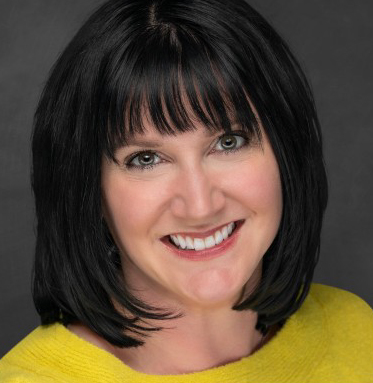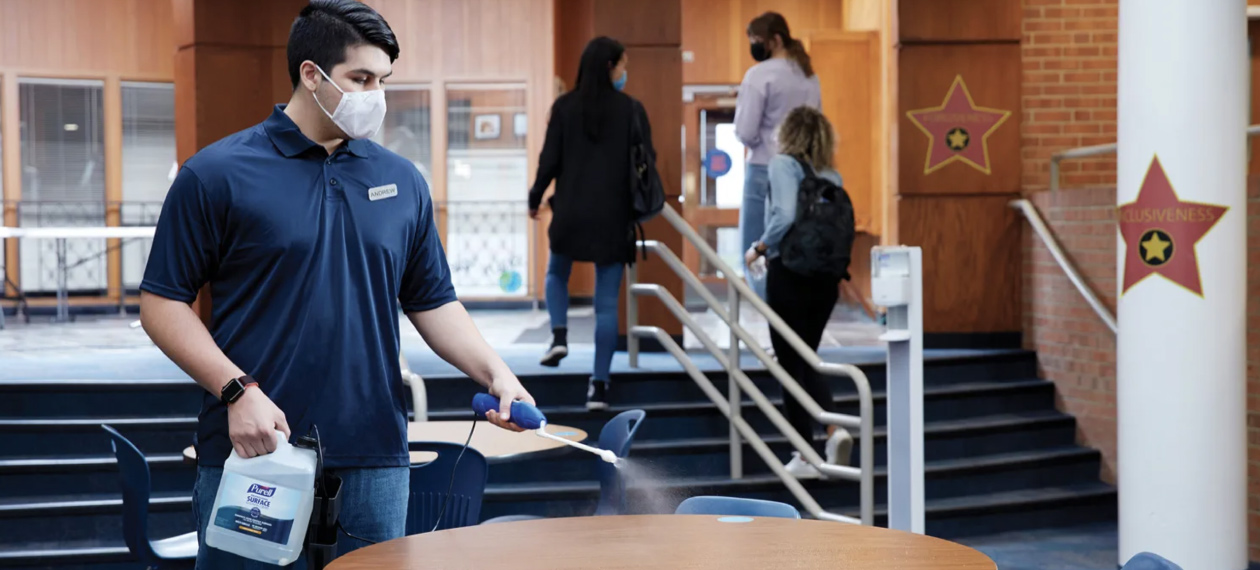As the official hygiene partner of the Higher Ed Facilities Forum and K12 Facilities Forum (as well as all other events produced by influence group), we checked in with GOJO Industries to find out more about why not all hand sanitizers are created equal, what school facilities leaders need to know about good hygiene practices, and the safety and efficacy of different sanitizer and disinfectant products.
Dawn Yeomans, Ph.D., Hygiene Sciences & Partnerships Senior Advisor for GOJO Industries, starts by telling us a little about her own background and what drew her to the hygiene sciences.

Dawn Yeomans |
I’ve always been interested in translational research – understanding the fundamentals of the science and applying this knowledge to benefit human health. My academic background in Biochemistry prepared me for applied research during my graduate studies, ultimately earning a Ph.D. in Biomedical Sciences. Instead of pursuing an academic career after obtaining my Ph.D., I almost immediately went into the consumer goods industry because I wanted to make a real impact on people’s everyday lives. I can’t think of a better way to do that than through products people use every day.
I have spent my nearly 20-year career in research and development working for “soap” companies – first Unilever, then Procter & Gamble, and now GOJO. I’ve considered other opportunities several times during my career, but ultimately, I’ve stayed in the industry because my personal (and company-shared) passion is in complete alignment: to create hygiene and personal care products that make people’s lives better and the world a healthier place. I’ve had the opportunity to contribute to over 100 new product launches in my career. I feel very fortunate to have joined GOJO during the COVID-19 pandemic when there is a real opportunity, every day, to make a difference to public health with our hygiene solutions.
What are the biggest challenges that you see in schools today – particularly as they relate to those responsible for the safety and operations of school buildings?
The pandemic has brought us together as a community in our shared desire to promote healthy educational environments. It’s wonderful that our schools and higher educational facilities are looking for information and guidance from scientific and medical experts. Unfortunately, there is an abundance of misinformation and misleading, inaccurate claims out there that make it difficult to know exactly what to do and what products to use.
While many companies and organizations are trying to get evidence-based information out there in an effort to promote public health, others appear to be more opportunistic than altruistic, and some are simply uninformed of risks associated with their current practices. Over the past two years, we’ve seen the emergence of new products, new (sometimes unproven) technologies, and new practices. For example, the FDA temporarily allowed the manufacturing of alcohol-based hand sanitizer by companies that had not manufactured it in the past in an effort to get more product into people’s hands when supplies were short. Many of these hand sanitizers contain dangerous chemicals and have since been recalled. In addition, the FDA has retracted its’ temporary guidance.
It may sound like old news to some, but unfortunately many of these products are still out there being used. Some of the new practices that emerged, like refilling open or “bulk” dispensers with sanitizer, pose potential safety risks, too. In most cases, these dispensers were not designed to store alcohol-based products, and have a risk of evaporation, leading to an ineffective product.
These are just a few examples that were intended to promote hand hygiene and reduce COVID-19 risk, but actually may not be providing the germ protection needed.
In your opinion as a hygiene scientist, what is the single most important thing that higher ed and K12 district facilities leaders should be thinking about right now?
This pandemic continues to be a big part of our daily lives, and we also have to be mindful of all of the “normal” seasonal illnesses that plague our schools this time of year – colds, flu, and gastrointestinal illnesses. My advice would be to avoid “hygiene fatigue” by going back to the [less controversial] infection prevention basics – tried-and-true strategies that have been scientifically proven over decades, if not centuries. These include hand hygiene basics like regular washing with soap and water or using alcohol-based hand sanitizer to kill germs that may cause illness, and regular cleaning and disinfection of high-touch surfaces to avoid cross-contamination.
Looking beyond COVID-19, what should higher ed and K12 facilities leaders be planning for in the long term?
I have a real worry that the current hygiene focus may be fleeting, and we’ll go back to the “old way” of doing things post-pandemic. During the pandemic, we’ve had a bit of a reprieve from common illnesses like colds and the flu, and that is largely due to our hygiene vigilance. Let’s reject the return of the “old” illnesses that plagued us pre-pandemic. Basic hygiene programs should be an integral component of maintaining a healthy school. This will not only help to reduce the risk of common illnesses, but can be ramped up during outbreaks and public health emergencies (e.g., future pandemics).
What are the products that you see as having the most value for higher ed and K12 facilities leaders, both now and in the long term?
GOJO has been studying the science of hand hygiene for over 75 years, and we are solely dedicated to making the best hand soap, sanitizer, and surface disinfectants available.
Since we invented PURELL® hand sanitizer, we have known that formulation is essential when it comes to developing an alcohol-based hand sanitizer. While the percentage of alcohol is very important, the total formulation impacts its performance and user experience. If you like the consistency, feel, and smell of it, you are more likely to regularly use it. Early in the pandemic, the rest of the world realized that formulation matters with the hand sanitizer they choose. People don’t want to use hand sanitizer that smells like tequila, or makes their hands dry out or feel sticky. They also want to know what they are using is safe. Investing in trusted, quality products like PURELL® hand sanitizer, soap, and surface disinfectants is the best way to ensure the products you are providing are actually being used.
With facilities teams now having to do more than ever, in many cases with fewer people than ever, one of the most valuable benefits of PURELL® products is the innovative technologies that help save valuable time. Our most innovative dispenser is the PURELL® ES8 dispenser, which is touch-free without the hassle of battery swap-outs and is compatible with smart technology. Including smart technology allows you to get alerts when dispensers are running low and can even help with more predictive and accurate ordering.
In the surface category, our disinfectants are unparalleled because they are safe enough to earn the lowest-allowable toxicity rating from the EPA, but strong enough to kill SARS-CoV-2 and many other germs in only 30 seconds. With no harsh chemicals, PURELL® Surface Disinfectants and Wipes can be used by teachers and other non-professional staff without worry – no handwashing or PPE are needed. It’s effective and efficient – what could be better?
The final benefit facilities leaders may care about is that GOJO has a large portfolio of sustainable products, so we can easily support sustainability goals. Plus, we are a WBENC-Certified Women’s Business Enterprise, so we can also help to support supplier diversity goals.

Posted by
Join us at HEFF!
An interactive retreat for facilities leaders at the nation's top colleges and universities.
Nov 8-10, 2026 | San Antonio, TX
Learn More









Comments